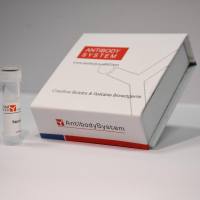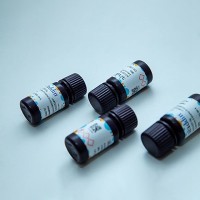The molecular beacon technology is an established approach for visualizing native mRNAs in living cells. These probes need to efficiently hybridize to accessible RNA regions in order to spatially and temporally resolve the dynamic steps of the RNA life cycle. A refined method using two computer algorithms, mfold and RNAstructure, is described for choosing shorter, more abundant target regions for molecular beacon binding. The probes are redesigned as small hairpins and are synthesized from 2′-O -methyl RNA/LNA chimeric nucleic acids. These tiny molecular beacons are stable in the cellular environment and have a high affinity for binding to target RNAs. The user-friendly synthesis protocol and ability to couple to a variety of fluorophores make tiny molecular beacons the optimal technology to detect less abundant, highly structured RNAs, as well as small RNAs, such as microRNAs. As an example, tiny chimeric molecular beacons were designed to target regions of oskar mRNA, microinjected into living Drosophila melanogaster oocytes and imaged via spinning disc confocal microscopy.






